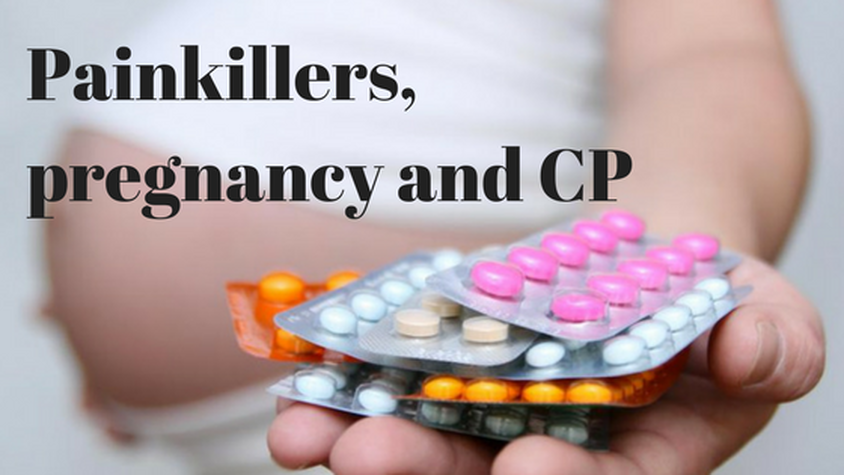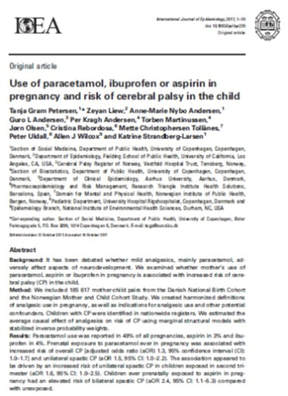|
A few weeks ago, I came across a report about research into the use of painkillers in pregnancy and an association with cerebral palsy. I said I would try to get my hands on the research article and give my take on it. So, here it is. Background CP affects approximately two in every 1000 children and is the most common condition causing movement difficulties. The inference is (and rightly so) that any knowledge which might reduce or eradicate CP has to be a good thing. Previous research The authors of this study acknowledge that no research study is perfect in design, but they point out that previous research into a possible relationship between painkillers and CP has focused on premature babies who are already at higher risk of developing CP. In addition, some studies collected the information after children were already diagnosed with CP, meaning that the accuracy of memories may have been an issue (recall bias). Finally, the underlying conditions of mothers who required painkillers were not fully accounted for, which clouded the picture (confounding variables). This study This study examined over 185,000 mums and babies from Denmark and Norway. This is a large study, and larger numbers usually mean more trustworthy results - the greater the sample, the more representative of a population any results should be. The information was collected as they went along (prospectively, thus reducing recall bias), and it was taken from the general population of mums and babies (a normative sample). Plus, they accounted for any underlying conditions that mums might have had, and they didn't include other things which might have skewed results - for example, twins, a non-surviving pregnancy, or where mums missed the first data collection. So, having dealt with the methodological issues from previous research, it seems that the authors put this study together as robustly as possible.
What did the researchers find? They found that out of all the combined data (Denmark and Norway) that almost half of mums (49%) reported using paracetamol during pregnancy, while 3% reported taking aspirin and 4% reported taking ibuprofen. They found that when children were exposed to paracetamol in the middle trimester, there was an associated increased risk of spastic CP affecting one side of the body (hemiplegia), Children who were exposed to aspirin had an associated increased risk of bilateral CP affecting both sides of the body (diplegia or quadriplegia). So, does taking painkillers cause CP? No. The authors are very clear that although these results show correlation, this does not mean causation. Think of a parallel example - we know smoking increases the risk of cancer (cause and effect), but smoking is also correlated with alcoholism - the two may happen together but alcoholism is not caused by smoking. Cause and effect is harder to demonstrate, and while the authors of this study speculate on the nervous system pathways which might make cause and effect biologically feasible, the results don't fully support the theories, and it is a long way off being known as fact. In addition... We should remember that this is a Scandinavian study, and cultural differences may not make the results applicable to us here in the UK/Ireland - we may have different patterns of prescribing and/or views on taking painkillers during pregnancy. In addition, those taking part were answering questions about use of painkillers during pregnancy, while they were pregnant. They may not have answered truthfully or they may have changed their behaviour (not taken painkillers when they otherwise might have done) just because they were in a research study (Hawthorne effect). Finally, the authors aren't 100% sure that they managed to eliminate all potential confounding variables. So, what should we take out of this? It's simply this. There appears to be an association between paracetamol and aspirin use and CP. Much, MUCH more work is needed to understand the mechanisms of nervous system development, and the study needs to be copied in similarly large numbers in other countries.
1 Comment
|
AuthorClare is an occupational therapist, a lifter of weights, a grandmother, a lover of dogs, pygmy goats, donkey, chickens and, of course, robins. Archives
August 2018
Categories |
Site powered by Weebly. Managed by Big Wet Fish Hosting




 RSS Feed
RSS Feed